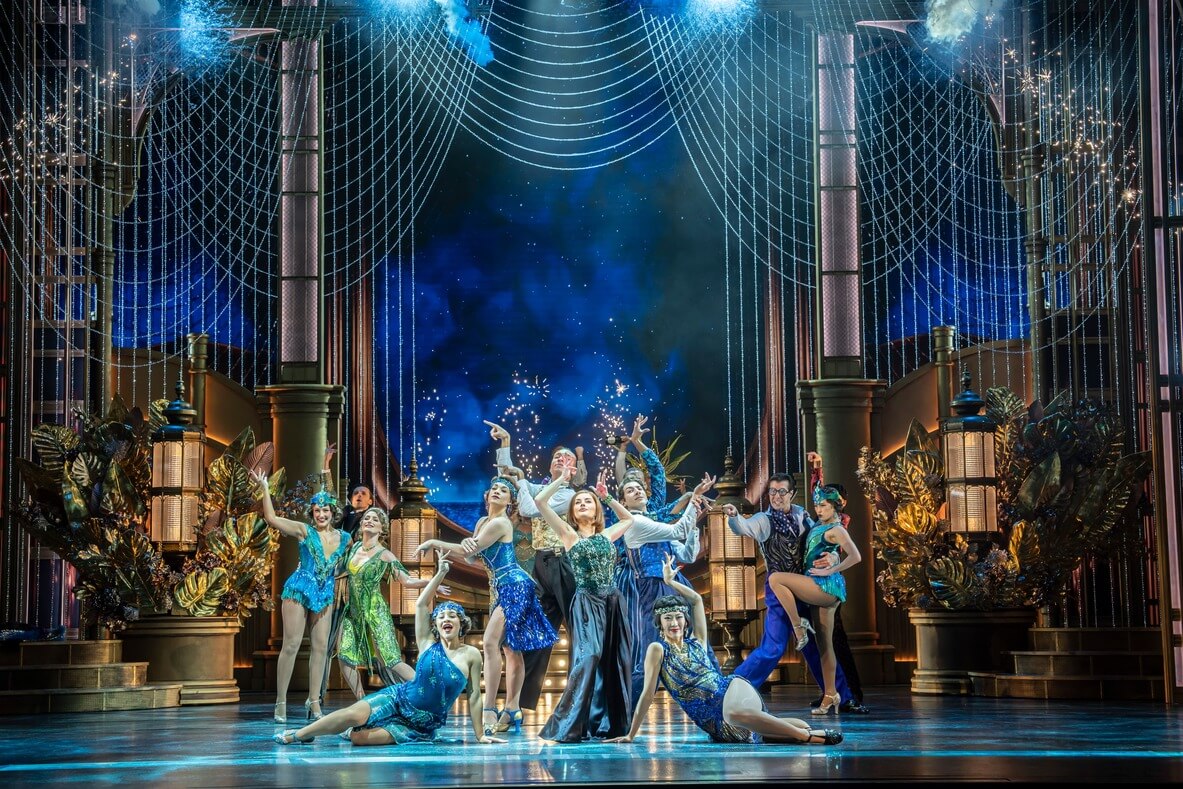 In the season of two plays and a musical I’ve directed this winter I’ve attempted to programme work in which great writers have reflected on similar issues to those we face today. This January, at the Union Theatre, with many of us feeling politically impotent in the face of dismaying election results, Chekhov’s play Three Sisters felt unusually immediate in its depiction of the obsolete intelligentsia of 1900. This was followed by a rare revival of Sondheim's expressionistic musical Anyone Can Whistle in which one half of the electorate regard the other as dangerously insane, the topicality of which speaks for itself.
In the season of two plays and a musical I’ve directed this winter I’ve attempted to programme work in which great writers have reflected on similar issues to those we face today. This January, at the Union Theatre, with many of us feeling politically impotent in the face of dismaying election results, Chekhov’s play Three Sisters felt unusually immediate in its depiction of the obsolete intelligentsia of 1900. This was followed by a rare revival of Sondheim's expressionistic musical Anyone Can Whistle in which one half of the electorate regard the other as dangerously insane, the topicality of which speaks for itself.
Finally, at the Finborough, as some Europeans lurch alarmingly to the right politically and Trump's supporters still clamour for his compulsory registration of Muslims, I'm directing Arthur Miller’s largely forgotten masterpiece Incident at Vichy.
I reread it in 2015 when I was researching an article on the influence of The Seven Samurai story structure. A plot device that gathers a disperse group of characters together in opposition to a common enemy. Meanwhile, as rolling news televised the Trump election rallies, Miller’s work seemed to burn with a topicality which demanded a revival.
“Donald J. Trump, who earlier in the week said he was open to requiring Muslims in the United States to register in a database, said on Thursday night that he “would certainly implement that — absolutely... Asked later, as he signed autographs, how such a database would be different from Jews having to register in Nazi Germany, Mr. Trump repeatedly said, “You tell me.”
THE NEW YORK TIMES November 20th 2015
In Arthur Miller's play it's 1943 and his “samurais” are ordinary men who have been pulled off the street for interrogation during the early days of an uneasy alliance between the Vichy government and the Nazis. Amongst them is a character Arthur Miller calls "Old Jew" who's pillow seems to mirror the one ripped in a Jewish parable where dispersing feathers represent the unstoppable spread of divisive propaganda. (Or as we have come to call it “fake news”)
When I researched the play's production history I was amazed to discover that it seems to have always been presented realistically. My Finborough production will be the first time, as far as I know, that play has been performed without a naturalistic set. And I hope it liberates it from our expectations of naturalism because it's hard to believe Miller wants us to believe in the literal reality of a room full of people who just happen to all represent a different perspective. In fact, so keen is he that we should see them as symbols that he doesn't even assign a name to many of the roles in the cast list, merely labels.
Although the characters respond to each other naturalistically, and the actors are required to play these exchanges with the emotional truth of naturalism, the nominal story is merely a platform for something much more interesting: a framework within which Miller can clash contrasting ideas about enforced, subconscious and capitulating compliance with an illogical oppression.
In the opening stage direction Miller states that the characters assemble as if they are musicians about to play and at the climax a character says of the Nazis -
"They are striving for a new nobility, the nobility of the totally vulgar... Their motives are musical, and people are merely the sounds they play"
For me the piece is about that sound. There's just enough "what will happen next" in the play to maintain a forward momentum but it is the disharmony of this little orchestra which really warrants our attention. Through the contrasting perspectives of Miller's symbolic characters, expressed in opposition, counterpoint and harmony, he skilfully provides a composite soundscape of how human beings react to illogical oppression.
Finally, and Miller is quite unapologetic with the artifice of this, the cacophony falls away, as cacophonies always do, to leave his two most elemental voices in opposition - the dreamer and the pragmatist; the play concludes, as any crucial deliberation must, with full and forceful declarations from these particular perspectives.
It's been very tempting to employ the usual directorial bag of tricks to heighten the emotional impact of the piece but I believe if Arthur Miller wanted to reduce us all to emotional wrecks with a play on this subject he obviously could and would have done so. That's not his intention in this short and punchy play. So we've set out to present truthfully delivered dialogue as starkly as possible to invite your analysis of the ideas expressed, throughout.
And Miller gives us plenty to chew on, some of which will have been particularly contentious to the original audience, many of whom may have had firsthand experience of the holocaust and its impact.
Can we be made complicit by our own paranoia? Will individual self preservation always preclude resistance as a group? Does art have any place in chaos or is it our best and only route to understanding? Do we condemn ourselves through our action or inaction? Why are there no women in the play? How would it differ if there were? We found it very rewarding to discuss these questions in rehearsals I hope you do too.
When the play premiered in 1964 the critic of the New York Times declared it “One of the most important plays of our time” concluding “Incident at Vichy returns the theater to greatness.” Despite this little has been heard of it since, until a recent and, again, naturalistic Off-Broadway revival.
I suspect it's disappeared largely because a one act play with a big cast doesn't fit easily into conventional theatre programming or budgets. But it may also be because the piece denies the reader the easy emotional catharsis of, say, Willy Loman's funeral in Death of a Salesman or John Proctor ripping up his confession in The Crucible.
To appreciate Incident at Vichy you have to really want to hear what it has to say, and now, more than ever, we really do need to hear what it has to say.
PICTURE: Phil Willmott and cast analyse INCIDENT AT VICHY (photograph Scott Rylander)





 This musical is Broadway's story about Broadway; those for whom it is home and the starstruck, from-out-of-town wannabes eager for their big break, a slice of success in the spotlight and with a bit of luck, (or someone else's misfortune), a fleeting dalliance with stardom.
This musical is Broadway's story about Broadway; those for whom it is home and the starstruck, from-out-of-town wannabes eager for their big break, a slice of success in the spotlight and with a bit of luck, (or someone else's misfortune), a fleeting dalliance with stardom.